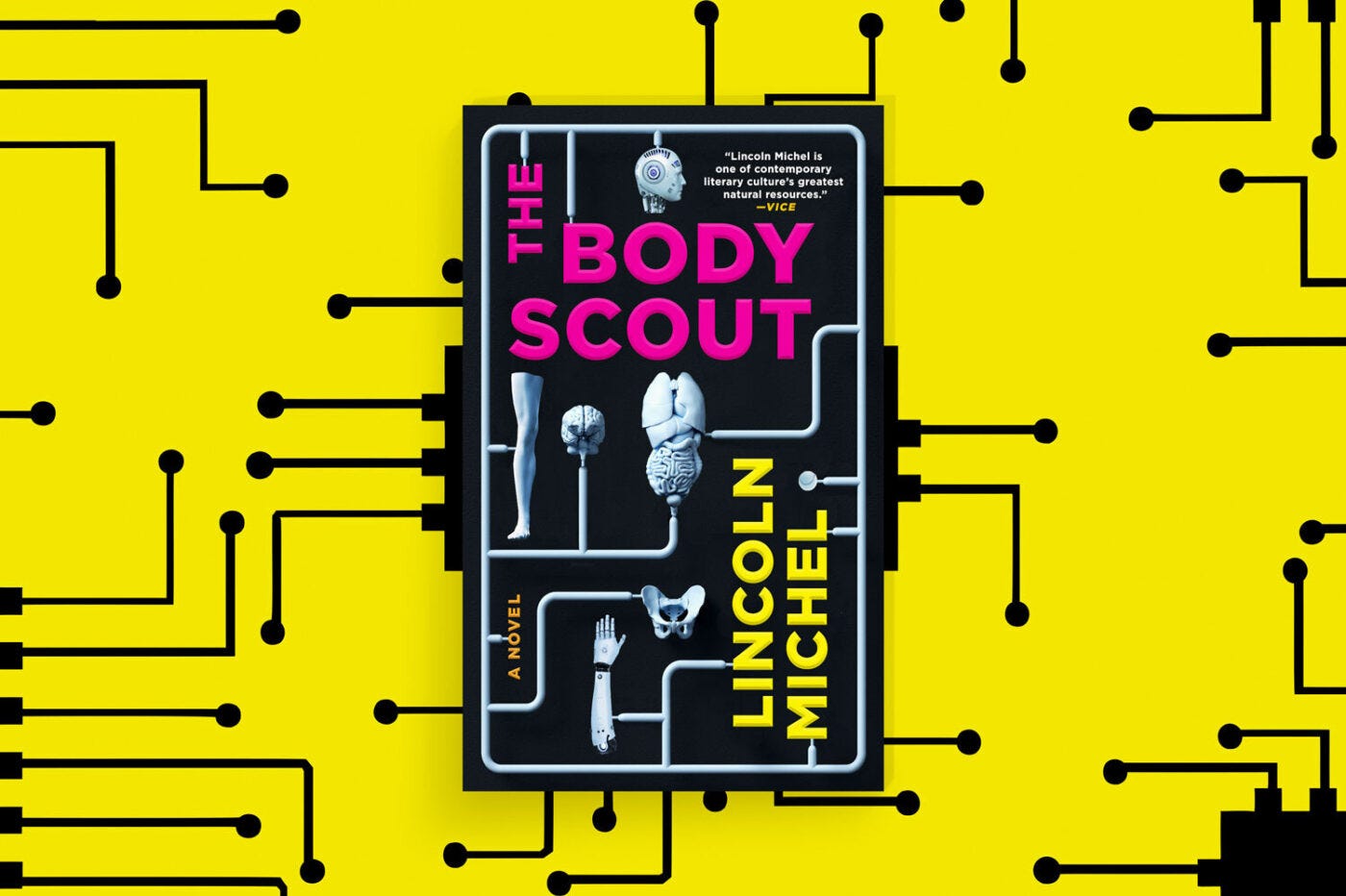Substack and the Return (?) of Serialized Fiction
On Salman Rushdie, author finances, and Substack as fiction publisher
This week Salman Rushdie announced he’s moving to Substack not—like most novelists, including myself—to just publish essays and musings but to serialize his fiction:
Mr. Rushdie plans to start with some serialized fiction and possibly a few essays, all of which will be free at first. He will eventually charge ($5 or $6 a month) to unlock, say, later chapters of a continuing work of fiction, or the ability to interact with Mr. Rushdie himself.
Although I can’t say I’ve read a Rushdie book in a while, as an author on Substack who thinks a lot about how to possibly make writing a career that earns a livable wage, I’m at least hypothetically interested in the idea of serializing fiction on Substack.
In The New Republic, the always smart Alex Shepard wrote about the move and noted that Rushdie correctly says the printed book isn’t going anywhere:
“People have been talking about the death of the novel, almost since the birth of the novel,” he continued. “But the actual, old fashioned thing, the hardcopy book, is incredibly, mutinously alive. And here I am having another go, I guess, at killing it.”
Rushdie isn’t wrong. The physical book has, somewhat improbably, maintained its supremacy in the digital age. Unlike the DVD or CD, nothing has truly emerged to threaten the analog; the printed page hasn’t yet had to make a “vinyl comeback.” At the same time, the book has hardly adapted to the internet age at all. Whatever the genre, books are simply not at all different than they were a few years ago, and no one seems particularly bothered about it. Not too long ago, there was a brief push to embrace things like QR codes to unlock digital supplementary material, but readers weren’t interested; the Kindle, meanwhile, is dominant among e-readers in large part because it so eerily replicates the feel of reading a physical book.
I’m 100% in agreement with Alex Shepard’s analysis of why books endure and why literally decades of attempts to “disrupt” the novel have failed. It’s still wild to think that as recently as recently as 2015 or so, it was common wisdom that the printed book was about to be as dead as CDs or Blu-Ray disks. A weird relic few people bought. Instead, physical books remain more popular than ebooks and most ebooks themselves—as Shepard says—seek to imitate the experience of paper rather than enhance it with images, pop-up videos, and other “features” that were once trotted out as the future of literature.
Still, is it possible that Substack could work financially for fiction writers? One doesn’t need to disrupt or change fiction at all to do this. It’s a question of publishing outlet, basically, not form. There’s no real difference between reading a short story on a Substack page vs. an online magazine’s page. Publishing a novel serially is a somewhat different experience than reading it at once, but of course serialization goes back to the days of Charles Dickens (and before) so isn’t a new thing by any means.
The success of Substack and similar services have shown writers what most artists in other mediums already knew: there’s a lot of money in fans. Hardcore fans are willing to pay extra to support the artists they love. For extras, yes, but even just to support. And fans seem to like knowing exactly who they are supporting, meaning that there is a not insignificant number of readers who are willing to, say, pay 5 bucks a month for an individual NYT journalist’s Substack who wont’ pay 5 bucks a month for a full NYT subscription.
So… can that translate to fiction?
We actually already know it can. In my article on how author’s earn money, I noted:
In general, it doesn’t seem like authors have harnessed the micropayment economy as well as musicians and visual artists. At least in the literary world. In the SFF world it’s a different story. Seanan McGuire’s Patreon page lists 13k per short story. N.K. Jemisin’s lists 5k a month. Most obviously don’t make that much, but there are a lot of SFF authors who make a few hundred a month from Patreon. And this can be a major percentage of author income.
Now McGuire and Jemisin are two of the most popular SFF authors around, and most authors can’t count on this kind of income. But it’s interesting. McGuire making 13k per short story published is a wild amount of money for short stories. Most literary magazines pay a few hundred bucks, and only the top ones pay ~2-5,000. It would be truly impossible to make that much per story on a consistent basis without something like a Patreon.
Rushdie, I imagine, has more calculations than just money here. His last few books have been…not terribly well received. (I haven’t read them so no comment.) And in general it’s been a while since he seemed like a cutting-edge, shaking-things-up author. Serializing on Substack might be a stab at getting that relevance back. Certainly it’s worked from a publicity angle already. And as Rushdie notes, he’s not going to stop publishing books with traditional publishers so this is all on the side.
Still, what are the finances? I don’t know Rushdie’s advances but let’s say they are in the realm of half a million. To “earn out” 500k you’d need to sell roughly 300k books (the actual math is very complicated, as royalties vary by format, but I’ve heard it’s roughly $1.6 a book). To earn 500k on Substack, you’d only have to 10k subscribers paying 50 a year.
Can Rushdie do that? I dunno! That’s a lot of people. But you can see how it might be easier for an author to get 10k subscriptions from diehard fans vs. sell 300k copies. A more average author advance is 25k, which would require only 500 subscriptions to earn the same money.
The nice thing about serializing fiction online is that it probably wouldn’t preclude publishing it in book form either. Readers already buy story collections where most of the stories appeared in magazines and novels that have been excerpted online. And if your novel is paywalled for a couple hundred readers, it shouldn’t affect the ability to sell it to anyone else not subscribing.
All that said, I have to admit I find trying to milk fans that way a bit icky. (All my own Substack posts are still free when first published. But I of course love it if you subscribe.) I guess I still like the idea that my fiction could theoretically be read by anyone even if I know in reality 99.999999% of the population won’t. But I do think that while the forms of novels and stories don’t seem to be changing, distribution methods are still ripe for (ugh) “disruption.” Could Substack and similar services be part of that change?
I suppose we’ll find out soon.
In personal news, it’s just about TWO WEEKS (gah!) until my novel The Body Scout comes out. The novel has gotten some nice press already including being listed as a best book of the fall by Esquire and receiving a very flattering review in BOMB Magazine: "a sci-fi noir with the rich, earnest character development one expects from a quieter book [...] a refreshing and assuredly unique work.”
If you’d like to check it out or pre-order, you can do so here or at your local bookstore.




Thanks for another insightful piece. For what it’s worth, there are a number of us writing and publishing serialized fiction on Substack right now, with different strategies and end games. Elle Griffin has just launched her gothic novel on her paid Substack https://ellegriffin.substack.com/, and will be publishing a chapter each week through next year, and then making it available as a lush hardcover volume for her higher tier of supporters, and for free for everyone else. Meanwhile, I’ve been publishing my own YA fantasy series called “The Favor Faeries” on my paid Substack (https://storycauldron.substack.com) and will be turning each book into a downloadable version once it concludes, first sharing with my paid subscribers and eventually publishing on Amazon, but those who follow my Substack will get them first, as well as other behind-the-scenes info.
Whether or not these serialized novels succeed and are financially viable is anyone’s guess, but the way I look at it, if we can grow our overall Substacks, including our free lists, that will help future publication prospects, and if we can develop even a small number of true fans with our serial fiction then it seems like a win-win. I mean, it’s not like there’s a huge financial investment to serializing on Substack!
Nice insight into self-publishing. I myself have recently plunged into the world of Substack publishing with my own serialized novel The Book of Dreams. https://cynthiacscott.substack.com/p/the-book-of-dreams-988?sd=pf. So far I've gotten views, but no comments and few subscribes, but I'm still plugging away. The hard part for those of us who aren't N.K. Jemisin or Salman Rushdie is getting a fan base from scratch. So that requires a lot of marketing, but from what I've heard, it really isn't any different for writers who go the publishing route. Also, by starting out by publishing my work and building a reader base, I'll also create enough buzz for publishers to consider accepting my work. So, Jackie Dana pointed out below, it really is a win-win.